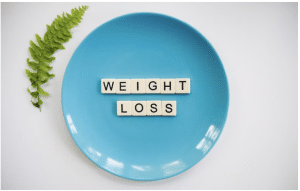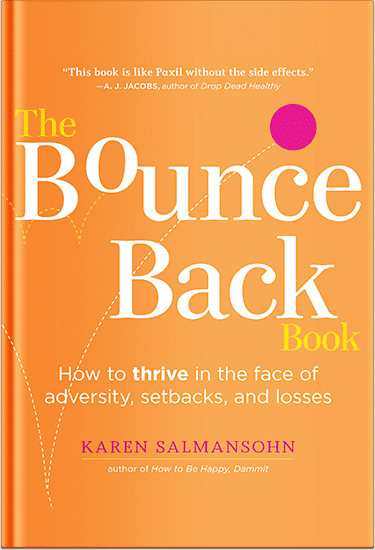 Here is a step by step guide to setting and planning your weight loss goals so you become your healthiest self.
Here is a step by step guide to setting and planning your weight loss goals so you become your healthiest self.
Embarking on a weight loss journey can be a life-changing decision. You may want to have a nice body that you can boldly walk along Virginia Beach comfortably.
However, a lack of clear goals and a well-thought-out plan can make your journey become an overwhelming and frustrating experience.
Setting and planning weight loss goals is the foundation for a successful transformation.
I’m writing this article because I’m a bestselling wellness author and founder of the bestselling online program, “The Stop Emotional Eating Course.”
In this guide, I will take you through the step-by-step process of setting effective and sustainable weight loss goals to ensure you achieve your desired weight and maintain a healthier lifestyle.
A Step-by-Step Guide To Plan Weight Loss Goals
1. Measure where you’re at now
Before diving into the goal-setting process, it’s essential to understand your current situation. Start by bravely looking at where you are now. Assess your current weight, BMI (Body Mass Index), and overall health.
It would also help to consider factors such as your age, gender, and any pre-existing medical conditions that may impact your weight loss journey.
2. Set SMART Goals
The next step would be to set specific, measurable, achievable, relevant, and time-bound (SMART) weight loss goals. Ask yourself questions like:
- How much weight do I want to lose?
- What is my target BMI?
- What is my ideal body fat percentage?
- How many inches do I want to lose from my waist, hips, etc.?
- When do I want to achieve these goals?
Remember, unrealistic expectations can lead to disappointment and demotivation.
3. Create a plan
Once you have a grasp on your situation and define your main weight loss goals, break them down into smaller, more manageable milestones. This step-by-step approach allows you to track your progress more effectively and celebrate small victories along the way. For example, if your ultimate goal is to lose 50 pounds in a year, aim to lose about 4 pounds per month.
Remember, nutrition plays a fundamental role in weight loss. Your plans should include a healthy balanced diet that won’t derail your progress. Ensure you consult with a registered dietitian or nutritionist to develop a personalized meal plan that aligns with your weight loss goals. Focus on a diet that includes a variety of nutrients and portion control. Lastly, it would help to ensure that your plan is sustainable in the long term, as crash diets often lead to temporary results.
4. Seek Professional Guidance
If you find yourself struggling or facing health issues related to your weight loss journey, don’t hesitate to seek professional guidance. Consult with your healthcare provider, a registered dietitian, or a certified fitness trainer. They can provide valuable advice, adjust your plan if needed, and ensure that your weight loss plan is safe and effective.
Another approach you could consider would be to attend an effective and sustainable weight loss clinic within Virginia Beach. You can search for mounjaro Virginia Beach, to get experienced professionals to make your dream body a reality. Patients who have undergone this treatment can attest to reduced hunger pangs and decreased cravings, and some have lost up to 22% of their body weight.
5. Establish an Exercise Routine
Physical activity is key to burning calories and achieving weight loss goals. It would be wise to start with an exercise routine that suits your fitness level and preferences. You don’t have to go all out and lift heavy weights at the gym. Your routine might be a mix of cardio workouts like jogging or cycling, strength training, and flexibility exercises.
As your body gets stronger, your muscles get used to the routine and you won’t feel as sore as you used to. You might also feel like you can lift heavier weights or run longer. At this point, you can gradually increase the intensity and duration of your workouts.
6. Monitor Your Progress
Keeping track of your progress is essential to stay motivated and make necessary adjustments. Consider using tools like a fitness tracker, journal, or weight loss app to record your daily food intake, exercise routines, and any changes in your measurements or weight. Regularly review this information to identify patterns and areas where you can improve.
In addition, tracking your progress is a great way to stay accountable. Other ways of improving accountability on this journey would be to share your goals with a trusted friend, or family member, or join a support group. Having someone to check in with, share your successes and challenges, and provide encouragement can make a world of difference in staying on track.
Conclusion: Planning Your Weight Loss Goals
Weight loss journey is not instant, it takes time. There will be times when progress is slow or when you face setbacks. With dedication, patience, perseverance, and the right support, you can successfully achieve your weight loss goals and maintain them. Ensure you follow the guide given to you at medical weight loss to achieve a healthier lifestyle for years to come. Don’t forget to reward yourself once in a while with something you enjoy like a spa day or a movie night.
Get More Weight Loss Support
Explore my nutritionist recommended online program, “The Stop Emotional Eating Course.”
P.S. Before you zip off to your next Internet pit stop, check out these 2 game changers below - that could dramatically upscale your life.
1. Check Out My Book On Enjoying A Well-Lived Life: It’s called "Your To Die For Life: How to Maximize Joy and Minimize Regret Before Your Time Runs Out." Think of it as your life’s manual to cranking up the volume on joy, meaning, and connection. Learn more here.
2. Life Review Therapy - What if you could get a clear picture of where you are versus where you want to be, and find out exactly why you’re not there yet? That’s what Life Review Therapy is all about.. If you’re serious about transforming your life, let’s talk. Learn more HERE.
Think happier. Think calmer.
Think about subscribing for free weekly tools here.
No SPAM, ever! Read the Privacy Policy for more information.
One last step!
Please go to your inbox and click the confirmation link we just emailed you so you can start to get your free weekly NotSalmon Happiness Tools! Plus, you’ll immediately receive a chunklette of Karen’s bestselling Bounce Back Book!


 Here is a step by step guide to setting and planning your weight loss goals so you become your healthiest self.
Here is a step by step guide to setting and planning your weight loss goals so you become your healthiest self.